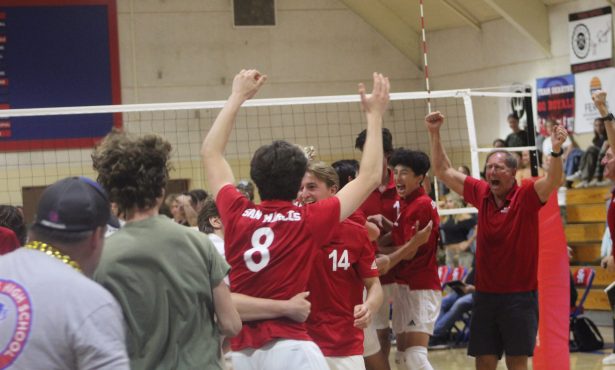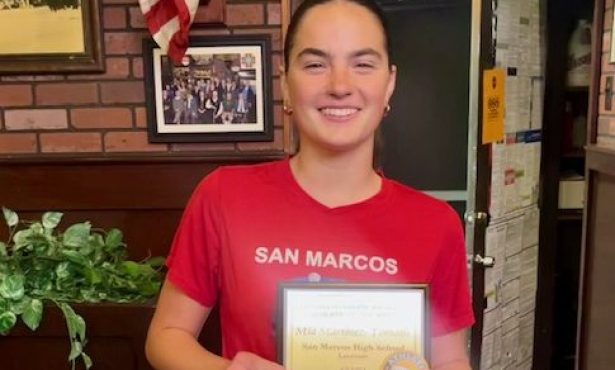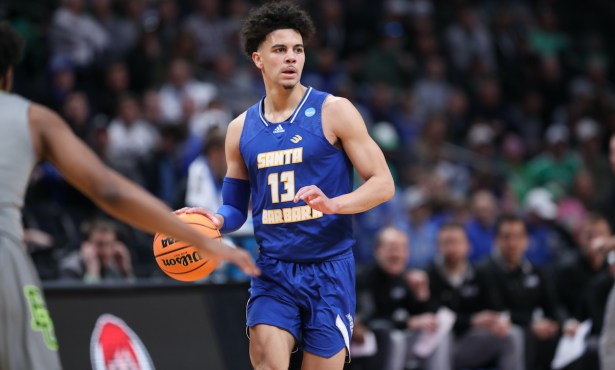Real Refs Return
NFL Acts Quickly to End Pro Ref Strike After Last Week’s Debacle
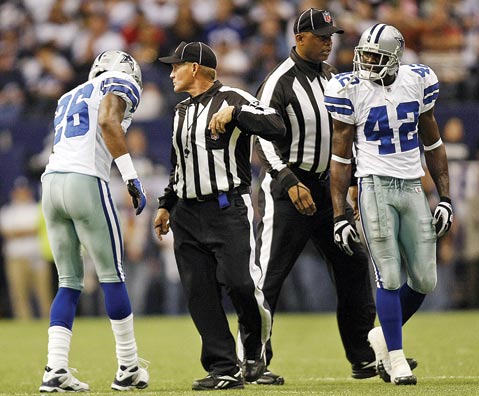
It was a beautiful screwup, that touchdown mistakenly awarded to the Seattle Seahawks a week ago Monday, giving them a victory over the Green Bay Packers on the last play of the game. Because of it, three legitimate National Football League officials from Santa Barbara went back to work Sunday.
Bill Leavy (Santa Barbara High Class of 1965) was the head referee at the Chargers-Chiefs game in Kansas City. Laird Hayes (San Marcos, 1967) was the side judge at the Titans-Texans game in Houston. Gary Cavaletto (Bishop Diego, 1973) was the field judge at the 49ers-Jets game in New Jersey.
Not wearing stripes last weekend was Lance Easley, the Santa Maria banker who made the infamous call in Seattle. He was one of the replacements hired by the NFL while the regular officials were locked out during their labor dispute with the league. Because of the demonstrated incompetence of the replacement crews during the first three weeks of the season, the NFL moved swiftly after the Monday-night fiasco to restore the veteran officials under a new eight-year contract.
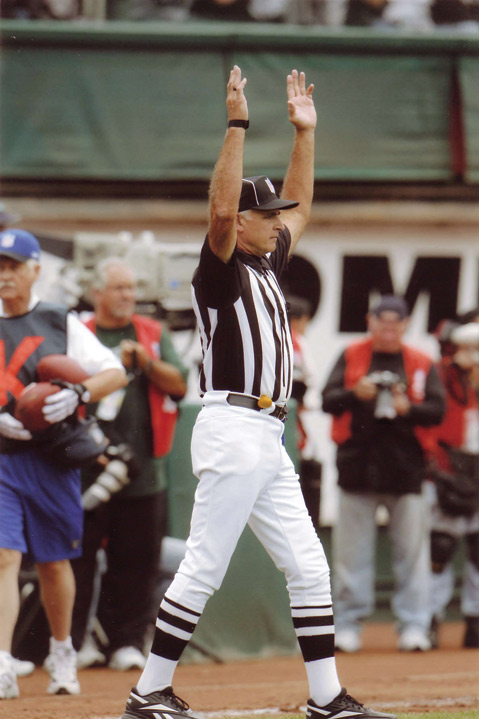
Leavy, Hayes, and Cavaletto have a combined 53 years experience in the NFL; ironically, the average pro football fan is more likely to know Easley’s name. With his arms upraised in the end zone, he became a hero in Seattle, the most despised man in Wisconsin, and a gridiron jester to TV viewers across the land. Easley later told TMZ.com that he made the right call, and the NFL backed him up in a face-saving gesture, but it did not exonerate him in the matter of the pass interference that Seattle’s receiver Golden Tate got away with.
Cavaletto threw a flag against the NFL owners and Commissioner Roger Goodell. “They didn’t show respect for our work,” he said. “[The replacements] were not prepared to do the job we had done.” Before he was promoted to the NFL, Cavaletto worked for 20 years as an official in NFL Europe and the Arena League. “I knew the rules,” he said. “I learned the nuances of the game.” By contrast, Easley’s football résumé was restricted to high school and junior college games in northern Santa Barbara County and San Luis Obispo County.
“I could take a high school crew to work an NFL game, and out of 150 plays, they would be okay for 120 of them, where everything’s routine, you mark the progress of the ball,” said Cavaletto, who lives in Goleta. “But 20 or 30 plays require special knowledge and skill. I get paid to work those 30 plays.” When he found out that high school referees were going after NFL jobs, Cavaletto said, “There wasn’t one of them that I wasn’t worried about.”
“We knew these guys were unqualified and would mess up,” Hayes, a Newport Beach resident, told the Daily Pilot. He did not witness the Monday-night mess in Seattle, opting to go to a movie instead. “I absolutely refused to watch those scabs work,” Hayes said.
Both Cavaletto and Hayes were on the job at Super Bowl XLVI. They were selected because of the quality of their work throughout the 2011 season. Hayes had to make the most crucial call of the game, on a 38-yard reception by Mario Manningham that set up the New York Giants’ winning touchdown against the New England Patriots. Working as the side judge — the same role Easley had last week — Hayes ruled that Manningham got both feet down and controlled the ball before he stepped out of bounds, the entire sequence happening in a split second. New England coach Bill Belichick challenged the call, but the replay confirmed it.
“Everybody talks about the great catch,” Cavaletto said, “but for a guy to be able to see that and make the right call, you cannot get any better than that. We’re going to miss some calls and get blamed for it, but Laird makes a great call, and does the NFL give him any credit for it?”
Leavy, a retired San Jose police officer, took some heat as referee of the 2006 Super Bowl, where some adverse calls went against Seattle in its loss to the Pittsburgh Steelers. Years later at a preseason training camp, Leavy apologized to the Seahawks for blowing two calls.
Hayes, in his 18th season as an NFL side judge, has worked at three Super Bowls. His next assignment will be in front of a national TV audience, at the Sunday-night (Oct. 7) game between the Chargers and Saints in New Orleans. You might be able to identify the Santa Barbara trio throughout the season by their numbers — Cavaletto wears No. 60, Hayes No. 125, and Leavy No. 127. But if the games go as they would like them to, you won’t even remember they were there.
UCSB’S Link to a Legend
Legendary coach C. Vivian Stringer will inaugurate Carlene Mitchell’s second season as UCSB women’s basketball coach with an after-dinner speech at the Montecito Country Club on Monday, October 8. Mitchell was Stringer’s assistant coach at Rutgers University for 10 years before she came to Santa Barbara last year and led the Gauchos into the NCAA tournament.
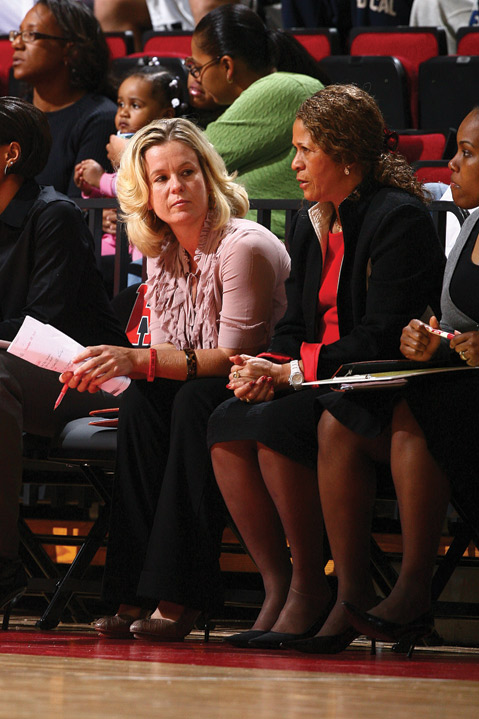
Stringer was inducted into the Basketball Hall of Fame in 2009 in recognition of her ongoing career, which includes coaching three different women’s programs into the NCAA Final Four — Cheyney State College (1982), Iowa (1993), and Rutgers (2000 and 2007).
Mitchell noted it is special for Stringer to come across the country during the first month of practice for the 2012-13 basketball season. “In my 10 years, she missed one practice, and that was to go to the funeral of Kay Yow [another Hall of Famer],” the UCSB coach said. “I’m sorry for the players and the staff at Rutgers, but they’re probably going to have a 5 a.m., 6 a.m. practice [Monday] so she can make her flight out here.” Stringer usually commands a five-figure fee for speaking engagements, Mitchell added. “For us, it’s for a hug.”
Monday’s events, including a golf tournament at the Montecito course, are a fundraiser for the UCSB women’s program. At 4 p.m., Stringer will be available to sign her book, Standing Tall: A Memoir of Tragedy and Triumph. The dinner will commence at 6 p.m. To sign up for the golf or purchase a dinner ticket, go to UCSBgauchos.com.
Solvang Mile
Bring Back the Mile is a national campaign to establish the mile (as opposed to 1,500 meters) as the preferred middle-distance running event. The four-minute mile is still a gold standard among athletic achievements. Several men will take a shot at it on Saturday morning, October 6, in the inaugural Solvang Mile.
The race will be run on a certified loop around the picturesque town, starting and finishing on Copenhagen Drive. (Santa Barbara’s State Street Mile finishes downhill from the starting point, so times recorded there carry an asterisk). Recreational runners will start the Solvang Mile shortly after 7 a.m., building up to the elite men’s race at 8:30.
San Diego’s A.J. Acosta, the USATF road mile champion (he ran 3:58 around the El Toro airfield), is the favorite to win the $1,000 first-place prize. Acosta has clocked a 3:53.7 mile on the track. South African Peter van der Westhuizen (3:54) and Santa Barbara’s Tommy Schmitz (3:58), a Wisconsin native, are expected to contend.
“We look forward to celebrating the iconic distance,” said race director Alex Kehaya, a teacher at Dunn School. The celebration will include food and beer tastings for adults at Solvang Brewing. Kehaya said a portion of the proceeds from the Solvang Mile will be donated to the Making Strides Against Breast Cancer campaign.

